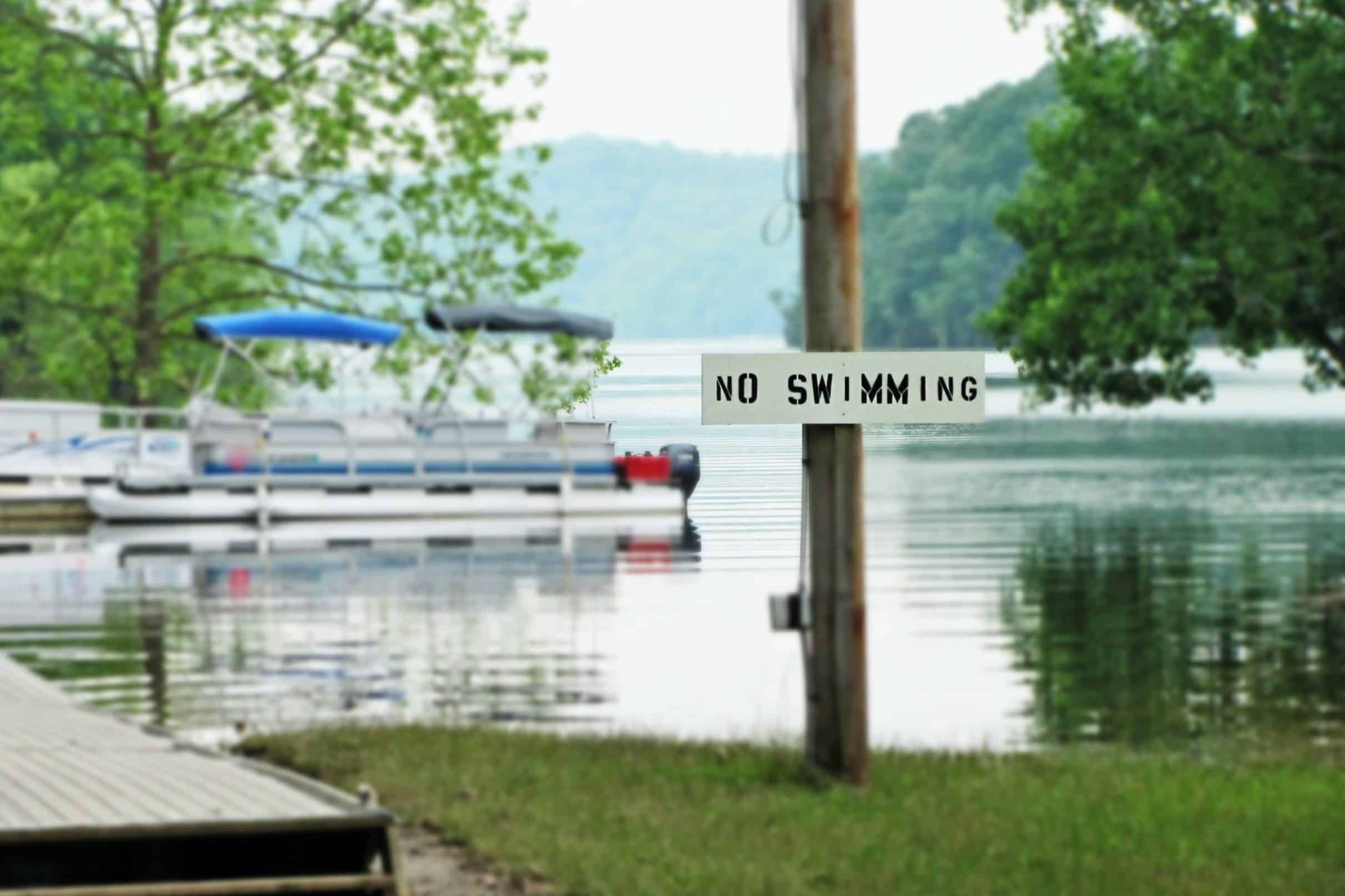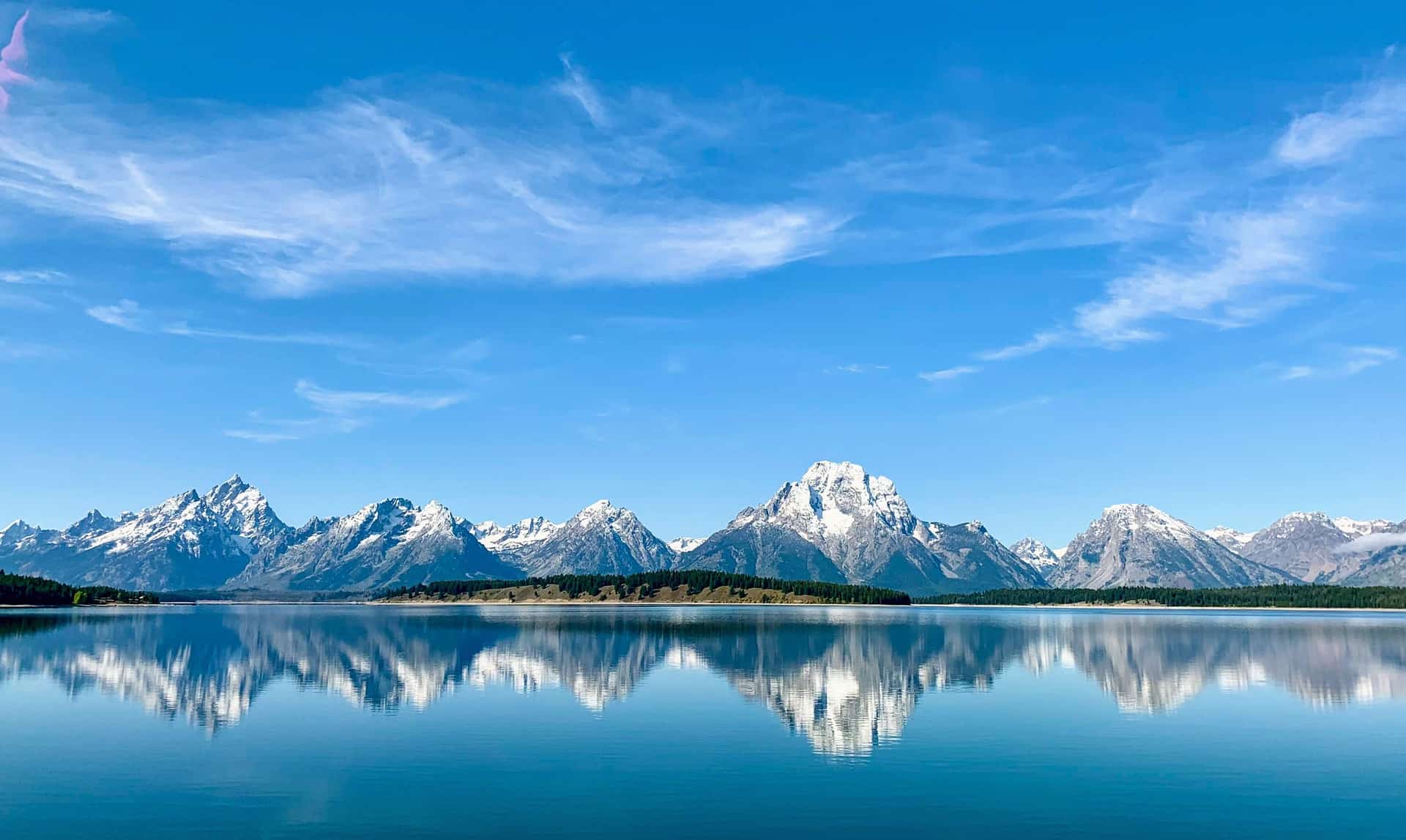One of the thrills of the outdoors is being able to swim in natural cold water. It’s refreshing, especially after an activity-packed day. In spite of this, you should keep in mind that outdoor destinations regulate swimming in natural water areas. They do this either for your safety or to preserve the water.
Can you swim in Grand Teton National Park? It’s possible to swim in all the water areas of the Grand Teton National Park, but swimming in the Snake River may not be allowed, depending on its condition. You should be prepared for a cold swim, as the water temperature in the park remains cold throughout the year – it rarely goes above 60°F/16°C.
The cold water shouldn’t dampen your moods; a great wetsuit can help you withstand the cold and enjoy your swim.
The YouTube video below will help you understand how a wetsuit works to keep you warm in cold water:
In this article, I have covered everything you need to know about swimming in Grand Teton. I have covered the popular swimming areas and the places you are not allowed to swim in. I have also outlined the swimming regulations in the park and safety tips.
Where to Swim in Grand Teton National Park?
There are lakes and rivers in Grand Teton where you can swim. These water areas have shallow and sandy swimming areas that are suitable for people of all ages. Swimming in the park also comes with some regulations for your safety and the preservation of the park.
I have given the details of the most popular swimming areas in the park below.
The Beach at Colter Bay
The Colter Bay Beach is on Jackson Lake. It is one of the best places for swimming in Grand Teton National Park. If you are car-camping in Grand Teton, the Lake is a few minutes’ walk from the Colter Bay Campground.
If you would like to do some kayaking, fishing, and boating besides swimming, this is the perfect place. You will also enjoy scenic views of the Grand Tetons and Mount Moran.
The water in Jackson Lake remains chilly even in summer. This is because cold water from melted ice runs into the lake from the nearby canyons and valleys. That said, prepare to swim in cold water. Also, the rocks on the beach are rough, so bring along some water shoes
Jackson Lake also has another small beach where you can swim. It is near another campground, called the Signal Mountain Campground
The Snake River
The Snake River flows from Yellowstone, through Grand Teton, and beyond Jackson Hole. The areas around the river are great places to spot wildlife. Be on the lookout for moose, bison, elk, ospreys, and bald eagles.
Swimming is allowed in the Snake River. However, the river can present numerous dangers to swimmers. This is due to changes in flow rate and steep drops in certain sections. Other times, obstacles such as boulders and logs in the water are risks to swimmers.
The condition of the river varies from time. Hence, the park keeps updating reports on significant changes. It is, therefore, essential to check this before swimming in the Snake River. You can get the information at river landings, visitor centers, and ranger stations.
A popular access point of the Snake River is a place the locals call Wilson beach. It is west of Jackson.
Grand Teton Park does not allow floatation devices such as inner tubes and air mattresses in the Snake River. This is because some of the materials can remain in the river and pose a danger to swimmers.
String Lake
String Lake is popular with most visitors that swim in Grand Teton, and for good reasons. It is shallower and warmer compared to other Lakes in the park. Additionally, it comes with a sandy bottom that’s safe and comfortable for your feet.
This makes it ideal for people who would rather keep off chilly waters. It is also convenient for families with kids.
The Lake comes with a beautiful view of the Tetons, a serene environment, and a picnic area. Bathrooms are accessible in the nearby parking area.
You can choose to drive to String Lake. If you are hiking in Grand Teton, though, there are trails that can lead you to the Lake for a cold swim.
OBS: Being a popular swimming spot in the park, prepare to share the experience with crowds.
Leigh Lake
Leigh Lake is at Mt. Moran’s base and is an excellent alternative to String Lake if you want to avoid the crowds.
On the eastern side of the Leigh Lake, you get some sandy areas that are shallow enough to swim and wade in. To access Leigh Lake, you will have to hike for 3-4 miles to the lake and back. You can also canoe or kayak to Leigh Lake from the north end of String Lake.
You will need some water shoes as the bottom has coarse sand and rocks. Also, bears are common in the area, so you need to keep some bear spray to reach and use quickly if necessary.
Slide Lake
Slide Lake is on the eastern side of the Jackson Hole Valley. The Lake dates back to 1925 when a landslide dammed the Gros Ventre River, leading to the formation of the Lake.
The area around the Lake is excellent for birdwatching, sightseeing, camping, hiking, and mountain biking. You can then cool down at the Lake’s east end, where the water is sandy and shallow.
As you swim or wade, you can also take in the surrounding scenery—the Flat Top Mountain and the Lost Eagle Peak tower above the Lake on the north and southeast.
Wildlife, like bears and moose, is common in the area. So, you need to respect their space and bring some bear spray in case you need it. Further, mosquitoes are many, especially in summer. To protect yourself from them, have a can of bug spray with you, and especially if you will be camping.
Where Swimming Is Not Allowed in Grand Teton National Park

There are a few sections of the water sources in Grand Teton where you cannot swim. So, what sections are these?
Jenny Lake Boat Concession and Jackson Lake Boating Area
Jenny Lake stands out for having crystal-clear and cold water. The view of the Tetons in the background is one of Jenny Lake’s most iconic sights.
You often spot wildlife like squirrels, marmot, moose, elk, bears, and mule deer. So bring a pair of binocular.
Hiking trails meander in the area surrounding the Lake. This is also the location of the Jenny Lake Campground, where you can camp. The Lake itself is famous for boating, canoeing, swimming, and fishing.
On the other hand, the Jenny Lake boat Concession is near the Lake’s north inlet. To avoid interfering with boating and to keep swimmers safe, the park does not allow swimming in this area.
Jackson Lake is also busy with boating compared to other Grand Teton Lakes. As such, there is a boat docking area where you are not allowed to swim.
Swimming Guidelines and Safety Tips in Grand Teton National Park
Grand Teton National Park has made an effort to keep all park visitors safe. When it concerns swimming, there are safety notices and warnings at the water areas and visitor centers.
They guide you on what you should or shouldn’t do to stay safe. That said, the rest is up to you.
Note: There are no lifeguards on-site at the water areas of the park.
I have collected and shared a list below of swimming guidelines and safety tips.
- While swimming is allowed in the Snake River, I don’t recommend it because of strong currents and cold water – according to the National Park Service (NPS).
- Water from lakes, rivers, and streams in Grand Teton may contain disease-causing microorganisms. Be extra careful, so you don’t drink some when swimming.
- Ensure that you can withstand cold water (60°F/16°C and below) before taking a dip.
- Don’t spend too much time in cold water to avoid hypothermia.
- To avoid lightning strikes, don’t swim during thunderstorms. They are common in summer afternoons (June-August). According to BBC News, the electrical discharge released by lightning on water spreads horizontally. This can be fatal for people floating on the surface of the water.
- The use of floatation devices such as float tubes, inner tubes, and air mattresses is not allowed in rivers, lakes, and streams.
- Swimming is not allowed within boat docking areas.
- Only swim in areas of the park that is allowed. If you are not sure, find out by visiting the visitor center.
Final Words
After fun outdoor activities in Grand Teton, you can take a cool dip within the park. The lakes are wildly popular with most visitors. If you have the time, you can try the slightly warmer swimming experience in the neighboring Yellowstone National Park.
Related: A Complete US National Park List

